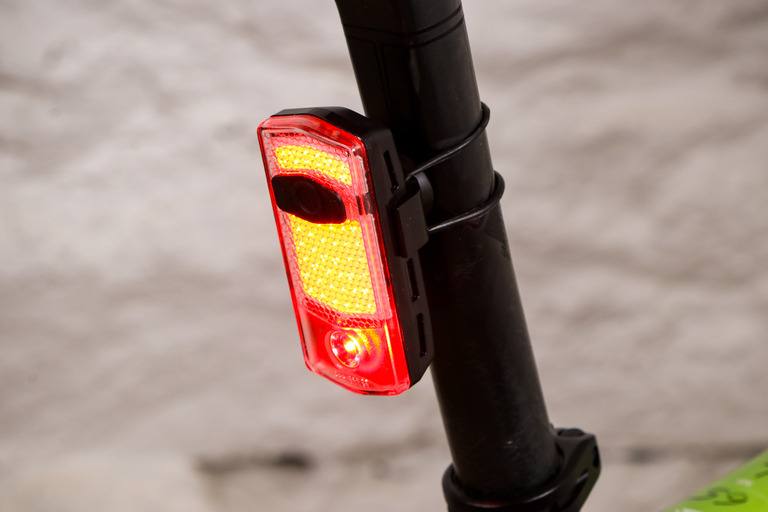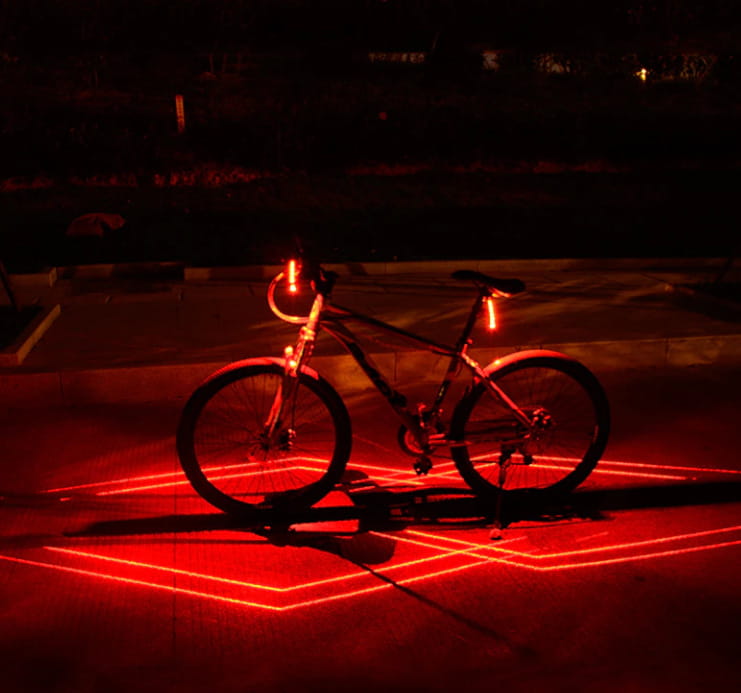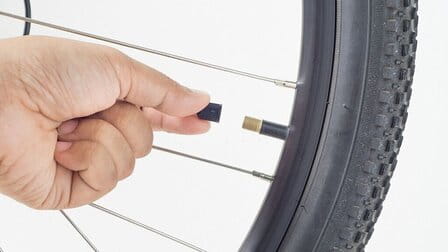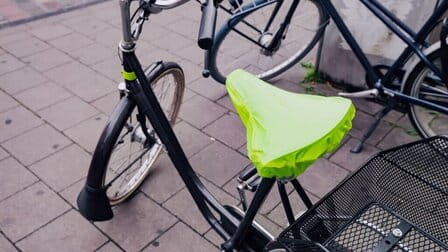Bike lights are a must-have accessory for anyone who is and is about to take part in cycling. They are known to provide light and safety when you are cycling.
The time of fall and winter is known to be a difficult time for cyclists, as they must always face cold temperatures, more rain and longer darkness. Maintaining adequate lighting should be checked and considered when cycling. In fact, they not only aid in visibility in low-light conditions, but also increase your presence higher. However, you can also choose the lights to automatically turn on/off between night and day.
Besides, you also can choose some appropriate reflexes depending on the type of bike. In addition, you need to consider a number of factors such as the placement of reflectors behind the pedals, forks, handlebars or seats. Legally, rear red light and white front light when installed. The bike lights are therefore an important safety solution to secure your trips outside. To understand how to use it and some essential information, please see the breakdown of the functions below.
1. Types of bike lights
1.1 See bike light

This type of light allows you to see places where there is a lack of strong light. When you're moving out of town or city on poorly lit roads, you need a strong front light. This helps you see any potholes or debris in the road ahead to react. Besides, this type can help you see other road users, but going against strong light can often be larger and bulky, and battery life is short. In addition, poorly designed or purposefully mounted lights can be so bright that they dazzle other participants. So an important factor to pay attention to is the brightness that the accessory provides.
1.2 Be seen light

The main purpose of this light is so that other road users can see you clearly. If you ride in the city, you can easily locate where you are from the street light. It is important to check that your lights allow for front and rear visibility. Therefore, you should ride with white lights in front and red lights behind.
1.3 Side bike light

Side display should be considered quite important with bicycles. For urban settings, vehicles are coming from many different directions and you need to be visible to the side at intersections. You can order them for your bike to attach to the frame. Alternatively, you can attach it to the wheel and light it up when the tire rotates. But the good quality front and rear lights also provide visibility from the side. Therefore, you can also view on production packages with 180 degree visibility as the rear burner has 180 degree visibility to see from the side.exi cem xers
1.4 Flashing bike light

Bicycle strobe lights are a pretty common choice these days, each with different blinking patterns, but they all work on flash to help attract the eyes of other road users and help you when found out. Besides, you can choose to flash during the day or at night. However, some argue that the flashing lights when driving make it difficult to check how far away, so at night it is advisable to combine a stabilizer light with a secondary strobe light like on a bag or helmet. In particular, it is advisable to check the legality of flashing lights in the country or territory where you live.
1.5 Laser bike light

For this type, a laser will be used to project the image onto the road and Beryl Laserlight is known for being the original bike light with a laser beam. The light will combine a white front light and a green bicycle laser beam on the road ahead to illuminate blind spots, providing greater identification and awareness to cyclists on the road.
1.6 Helmet bike light

Helmet lights are usually small, lightweight lights designed to shine on the front, top, or back of the helmet. In addition, these lights provide a secondary point of view close to the driver's eye level and help them discern head movement. We encourage you to use helmet lights in addition to the main bike light.
1.7 Daytime bike light
Some people tend to only need bike lights at night when it's dark, but they rarely mention that using lights during the day also improves visibility. With daytime flash mode lights like Laserlight Core will turn on very bright flash mode to attract the driver's eyes. Daytime flash modes are brighter than flash modes designed for nighttime use, which is why they need to be larger to be effective. Instead of
you often see high-low-high light chains, the lights use on-off-on.
2. Types of using lights
In addition to choosing the right lights for your bike and your commute, the right lights are also quite important.
LED: high lamp durability and good energy distribution. In addition, they have many different levels of brightness so that they can adjust themselves to suit the road.
Lumens: known as a unit of measurement for the brightness of light to the human eye. As they are measured at a certain distance and describe only the light intensity of the illuminated unit. In which, the lumen levels are determined as follows:
- 0 - 500 lumens: suitable for urban cycling in low light and close-up road lighting. You can see the traffic.
- 500-2000 lumens: used for night driving, rural roads, lack of light to ensure your safety. However, if there are more lumens, two batteries will be consumed more. Therefore, the time to use moringa is only within an hour.
- 2000 lumens: high power and off-road use only. In addition, usually equipped with an external battery to allow longer runtime and wider light beam.
Lux: measures light intensity over an area and mainly measures in ranges from 1-10 meters. In fact, if the lumen is measured in constant light, the larger the surface area, the less lux it cannot provide well.
Light pattern: you go on a street lighted path, you can equip your bike with a narrow focal length front light beam. If traveling on darker roads, wide beams are preferred because they have good peripheral vision. There are many types of chandeliers on the market, so read carefully the information and check the product.
3. Batteries of bike light

Most clock type battery powered bike lights like CR2032 are the most common size and can last for hundreds of hours with light levels for small units. Most bicycle lights today contain lithium ion/polymer batteries and they are similar to cell phone-grade batteries. These batteries will be made small and light enough for moderate charge to provide acceptable burn times, which can also be easily charged using a desktop computer's USA cable. Some pre-rechargeable batteries such as NiCad or NiMH are like old batteries but are rechargeable; It should be noted that if you do not use them, they will self-discharge at a rapid rate. On the other hand, there are a few things to keep in mind about lithium ion batteries, so follow the manufacturer's instructions on what to do to maintain the life of the battery.
Overall, lithium ion batteries are known for their excellent power delivery. They can be easily charged and last for a long time. And all chargers will usually provide consistent lighting until they run out of power, so chargers often have warnings based on fuel gauge or low battery. Charging devices have a power setting so it's easy to tell if they have power or not.
4. Front bike light

The position of the front light needs to be carefully chosen and determined when you are driving at night to perform. If you only ride in urban areas, it is important that you be seen by other road users. If you're traveling on poorly lit roads then what you want is a device that's bright enough to show potholes in the road before the wheels hit.
Now, with the advancement in rechargeable lithium batteries and LED technology, many manufacturers are now able to produce extremely high wattage lamps. For urban use, this point is not necessary as they cause dangerous glare for other road users. On the other hand, they can also be heavier than light and have a high price tag.
Most front lights produce a maximum of 500-700 lumens, which, combined with a strobe mode, is therefore suitable for urban riders. Rechargeable Lithium battery that won't fade out when it runs out of juice so you don't get many warnings.
In case if you do not go on unlit roads, other lights can be considered. For these situations, light with a flat beam, bright to the sides, and able to focus on a point on the road ahead. On top of that, LEDs differ from older filament lamps because they are difficult to focus accurately; thus dazzle other road users. In general, high-powered lights are designed for off-road use.
5. Rear bike light

Usually the front and rear bicycle lights are not the same level of illumination. Although all lights now have lithium ion batteries with USB charging function, the output stays the same. As a result, manufacturers accept an industry-imposed limit of 0.5 watts on afterglow brightness. However, with the introduction of technology into the manufacturing process, some of the engine's rear lights can sense when you're braking and increase their brightness accordingly. What you do to help the driver become safer when driving the vehicle behind. Note that only bicycles are allowed with a flashing red light behind them, making it easier for drivers to locate you.
Rear bike lights of Dynamo and derived from engines are generally compliant with German regulations, so incorporating reverse reflectors is also required by law. But with German regulations no flashing is allowed.
Cateye and Exposure have the same sensor functionality and are available in USB rechargeable rear lights. In particular, they will be brighter when slowing down to an intersection.
Garmin includes a radar to help them alert the driver via a handlebar-mounted display of an approaching vehicle from behind. Moreover, when the light is connected to the Garmin computer, it will also automatically adjust the brightness depending on the available light.
6. Fitting of bike light
Newer rechargeable or battery bike lights are made to be easily removed from the bike without tools. On the other hand, some security reasons and need to remove them frequently to charge/replace batteries.
As above, the battery-powered front lights are designed to sit above the handlebars, but can create a lot of space when they are hung below. Exposure lights have recently developed a bracket that fixes to the center handlebar clamp and places proper lighting in front of and below the bars.
The battery-powered rear bike light attaches to a pole, where you don't leave them unobstructed by jackets and low-hanging bags. Besides, there are still some other options by installing the seat, but sometimes it works but not safely on a thin tube, so the light slides round to point to the side, down.
Dynamo lights are attached to the bike because they are wired to the dynamo block and do not need to be moved when mounted. This is why Dynamo headlights fit into the crown, which helps keep the cable to the engine hub shorter, keeping lights and wires away from the steering wheel. In case, if you want to hang the blast light from the steering wheel or some other place then you have to buy a stand or make one yourself. The rear lights are usually attached to the rear trunk or fender.
7. Maintain batteries system of bike light
The bike light battery can charge evenly over 500 charge cycles. By connecting via power cord or USB charger. When charging the battery you make sure it should not be overcharged. However, the charger smart battery automatically stops when fully charged. Note, batteries do not work, equivalent power will be lost, so plug and charge the system before each use.
Conclusion
Bicycle lights not only provide light to help cyclists see obstacles, but also ensure an enjoyable and safe ride. Therefore, understanding the necessary information and the products we share is essential for you when shopping and when cycling in poorly lit terrain. Since then, many manufacturers have produced many bicycle lights that can recharge battery structure and LED technology combination to enhance the appropriate brightness level. Besides, you should also bring spare lights, unless the lights are broken. Thank you for reading.













